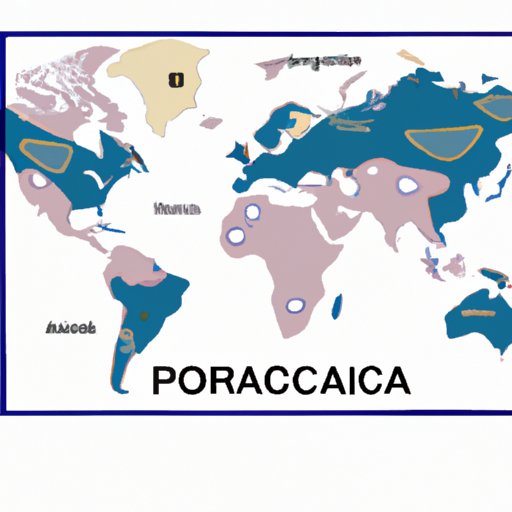Introduction
Pangaea, also known as Pangea, is a term used to describe the supercontinent that existed during the late Paleozoic and early Mesozoic eras. It was a single landmass that comprised all of Earth’s major continents. This supercontinent was made up of six major plates: the African plate, the Antarctic plate, the Arabian plate, the Australian plate, the Eurasian plate, and the North American plate. In this article, we will explore what Pangaea is, its formation and breakup, and how it has shaped life on Earth.
A Brief History of Pangaea
The concept of Pangaea was first proposed by Alfred Wegener in 1912, who suggested that all of Earth’s continents had once been connected. He proposed that 200 million years ago, all of Earth’s major landmasses were united in one supercontinent. This idea was based on evidence of matching rock formations, fossils, and other geological features found in different parts of the world. In addition, Wegener noted that the continents seemed to fit together like a jigsaw puzzle if they were placed side-by-side.
Wegener’s theory was further supported by the discovery of magnetic stripes in the seafloor, which indicated the movement of tectonic plates over time. This led to the theory of continental drift, which suggested that the continents were slowly drifting apart due to the movement of Earth’s tectonic plates. By the 1960s, scientists had developed a more detailed understanding of the process of continental drift and its role in the formation and breakup of Pangaea.
The breakup of Pangaea began around 200 million years ago and lasted until about 65 million years ago. During this time, the continents gradually moved apart and eventually formed the modern-day continents. The breakup of Pangaea had a profound effect on life on Earth, as it allowed for the evolution of new species and the spread of existing species to new environments.
What is Pangaea?
Pangaea is a supercontinent that formed approximately 200 million years ago and broke up around 65 million years ago. It was made up of six major plates: the African plate, the Antarctic plate, the Arabian plate, the Australian plate, the Eurasian plate, and the North American plate. The formation of Pangaea was caused by the gradual movement of these plates, which is known as continental drift.
Continental drift is the process by which the Earth’s tectonic plates move and interact with each other. This movement causes the continents to shift and move apart from each other over time. This process has been occurring since the formation of Earth, but it became more pronounced during the formation and breakup of Pangaea.
Continental drift is driven by convection currents in the mantle, which are created by heat from the Earth’s core. These convection currents cause the tectonic plates to move and interact with each other, resulting in the formation and breakup of Pangaea. Over time, the continents have continued to drift apart, creating the modern-day continents.
Conclusion
In conclusion, Pangaea was a supercontinent that existed during the late Paleozoic and early Mesozoic eras. It was made up of six major plates, and its formation and breakup were caused by the process of continental drift. The breakup of Pangaea had a profound effect on life on Earth, as it allowed for the evolution of new species and the spread of existing species to new environments.
If you would like to learn more about Pangaea, there are many resources available online. You can read scientific papers on the subject, watch documentaries, or explore interactive maps that show the movement of the continents over time.
(Note: Is this article not meeting your expectations? Do you have knowledge or insights to share? Unlock new opportunities and expand your reach by joining our authors team. Click Registration to join us and share your expertise with our readers.)
